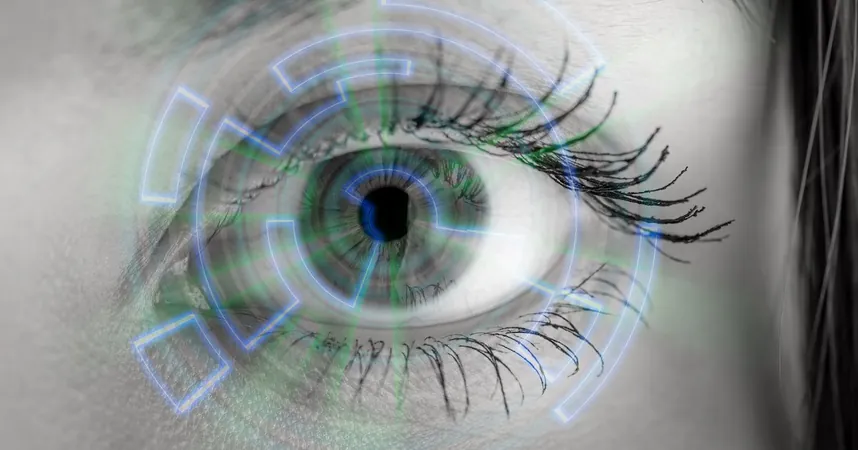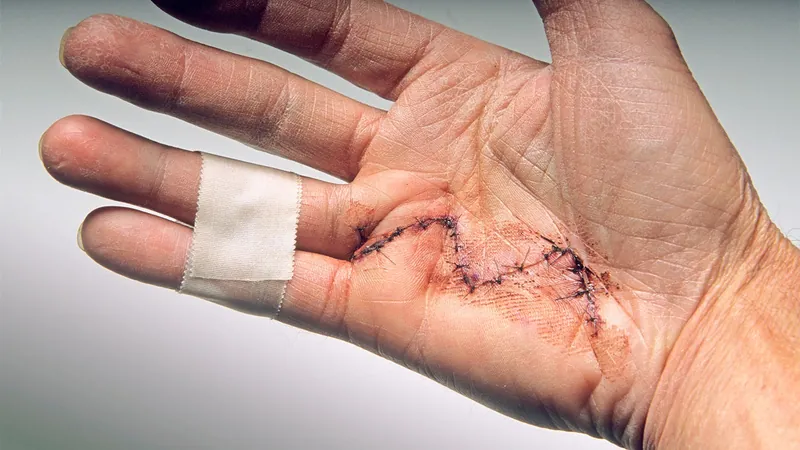
Breakthrough Treatment Allows Patients with RPE65-Related Retinopathy to Regain Vision: You Won't Believe the Results!
2024-10-09
Author: Siti
Exciting advancements in the treatment of RPE65-related retinopathy have emerged, showcasing the remarkable potential of gene augmentation therapy voretigene neparvovec-rzyl (VN), commonly known as Luxturna. According to a recent study published in Documenta Ophthalmologica, this innovative therapy demonstrated the ability to help patients recover partial functionality in their vision, as evidenced by improvements in the full-field electroretinogram (ERG).
Dr. Mark Pennesi, an ophthalmologist from Oregon Health & Science University, emphasizes that voretigene neparvovec is revolutionizing the treatment landscape for inherited retinal degenerations. “It was once believed that functional improvements were undetectable by ERGs, but our findings reveal that some patients show significant enhancements. We anticipate that even more cases will be identified, particularly when treatment is administered in early childhood,” Dr. Pennesi stated.
The study followed 12 patients, highlighting three individuals who received bilateral treatment and exhibited a remarkable recovery in their ERG readings following subretinal injections of VN. Their improvements were consistent throughout the study period from 2018 to 2022. Most other participants, who had severely impaired ERGs, did not show noticeable changes after receiving the treatment.
The procedural approach used to assess patients' visual function included pharmacological dilation of the pupils followed by comprehensive ERG recordings after periods of both dark and light adaptation. This method allows for an accurate measurement of retinal responses to visual stimuli.
Among the patients studied were a notable 25-year-old woman, a 16-year-old boy, and a 4-year-old boy. The older subjects (cases 1 and 2) displayed a relatively preserved visual function prior to treatment, as measured by their best-corrected visual acuity (BCVA) and visual field tests. Meanwhile, the youngest participant started with unrecordable ERGs and showcased less significant improvements, which could be attributed to the different stages of their respective conditions.
Not only does this research present the largest cohort of patients receiving VN with documented instances of increased ERG activity, but it also offers a pioneering report on bilateral ERG recovery and improvements in older subjects. This discovery can pave the way for further exploration using ERG in conjunction with visual tests and advanced imaging techniques to better comprehend the effects of gene therapy.
The study underpins a prior retrospective analysis that also noted partial ERG recovery in preschool-aged children, reinforcing the ongoing developments in this field. RPE65-related retinopathy is characterized by biallelic mutations in the RPE65 gene, leading to conditions such as Leber congenital amaurosis type 2 and severe early childhood-onset retinal degeneration.
VN works by providing retinal cells with a functioning copy of the RPE65 gene, enabling them to produce the essential RPE65 protein that is crucial for translating light into visual signals for the brain. The most significant improvements were seen in the oldest patient, whose form of the disease was less severe, while the youngest patient displayed a stark contrast between their structurally intact outer retinal layers and the extinguished ERG signals, highlighting a notable dissociation between structure and function.
The implications of these findings are revolutionary, hinting at a new hope for patients suffering from RPE65-related eye diseases and potentially changing the paradigm of treatment for inherited retinal disorders. As research continues, the prospects for full restoration of vision in affected individuals could become a reality. Stay tuned for further updates in this groundbreaking area of medicine!

 Brasil (PT)
Brasil (PT)
 Canada (EN)
Canada (EN)
 Chile (ES)
Chile (ES)
 España (ES)
España (ES)
 France (FR)
France (FR)
 Hong Kong (EN)
Hong Kong (EN)
 Italia (IT)
Italia (IT)
 日本 (JA)
日本 (JA)
 Magyarország (HU)
Magyarország (HU)
 Norge (NO)
Norge (NO)
 Polska (PL)
Polska (PL)
 Schweiz (DE)
Schweiz (DE)
 Singapore (EN)
Singapore (EN)
 Sverige (SV)
Sverige (SV)
 Suomi (FI)
Suomi (FI)
 Türkiye (TR)
Türkiye (TR)